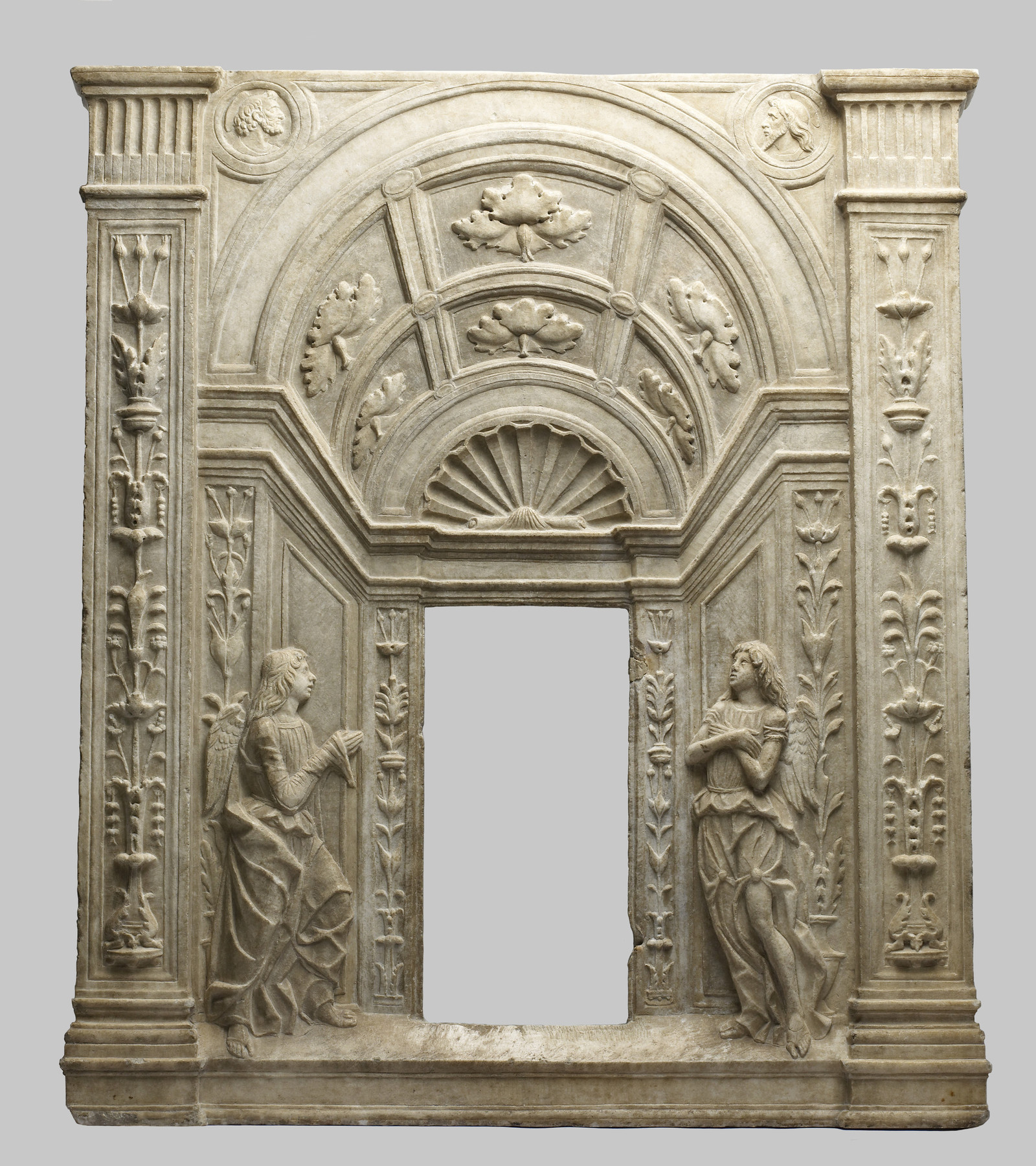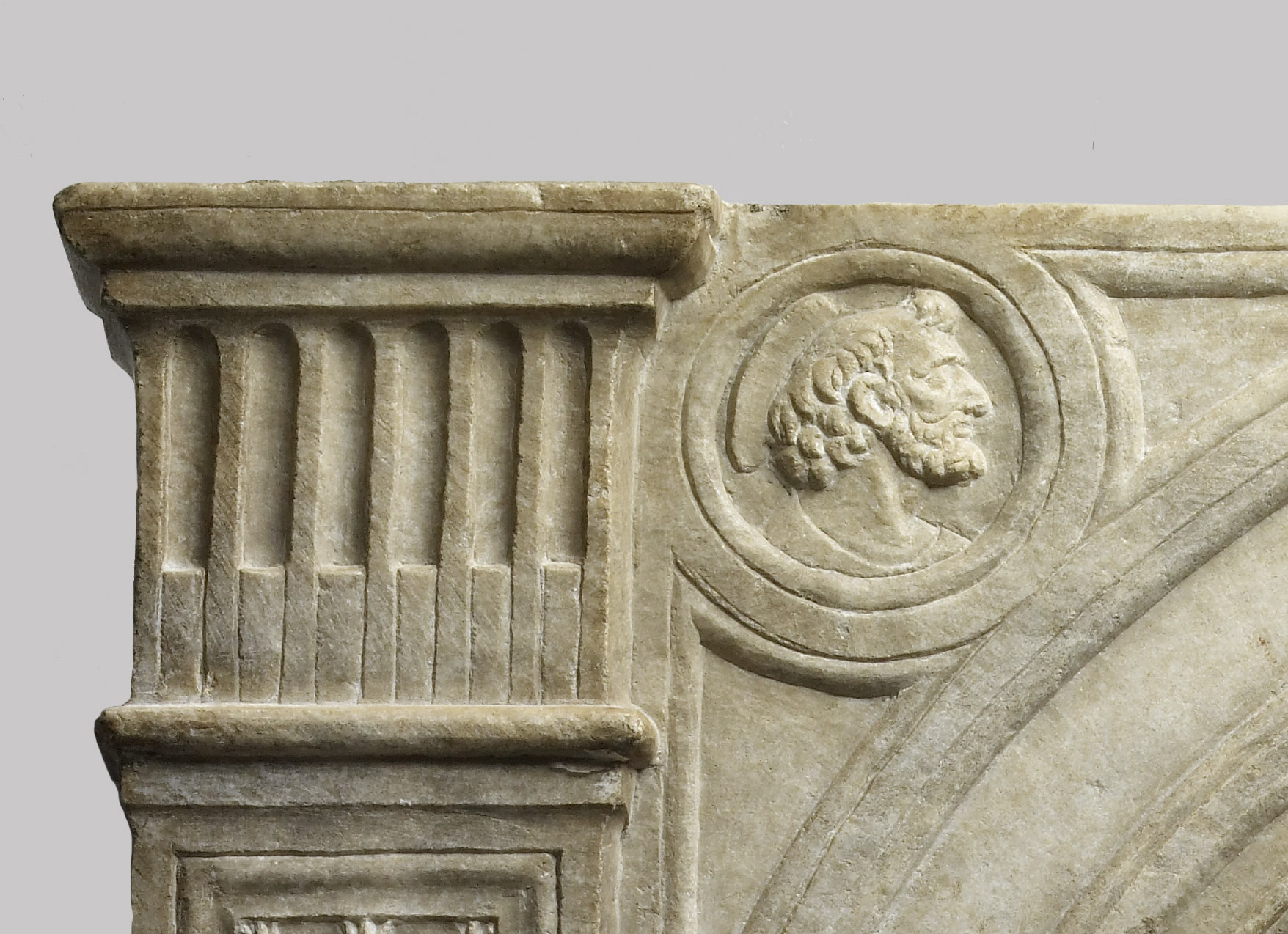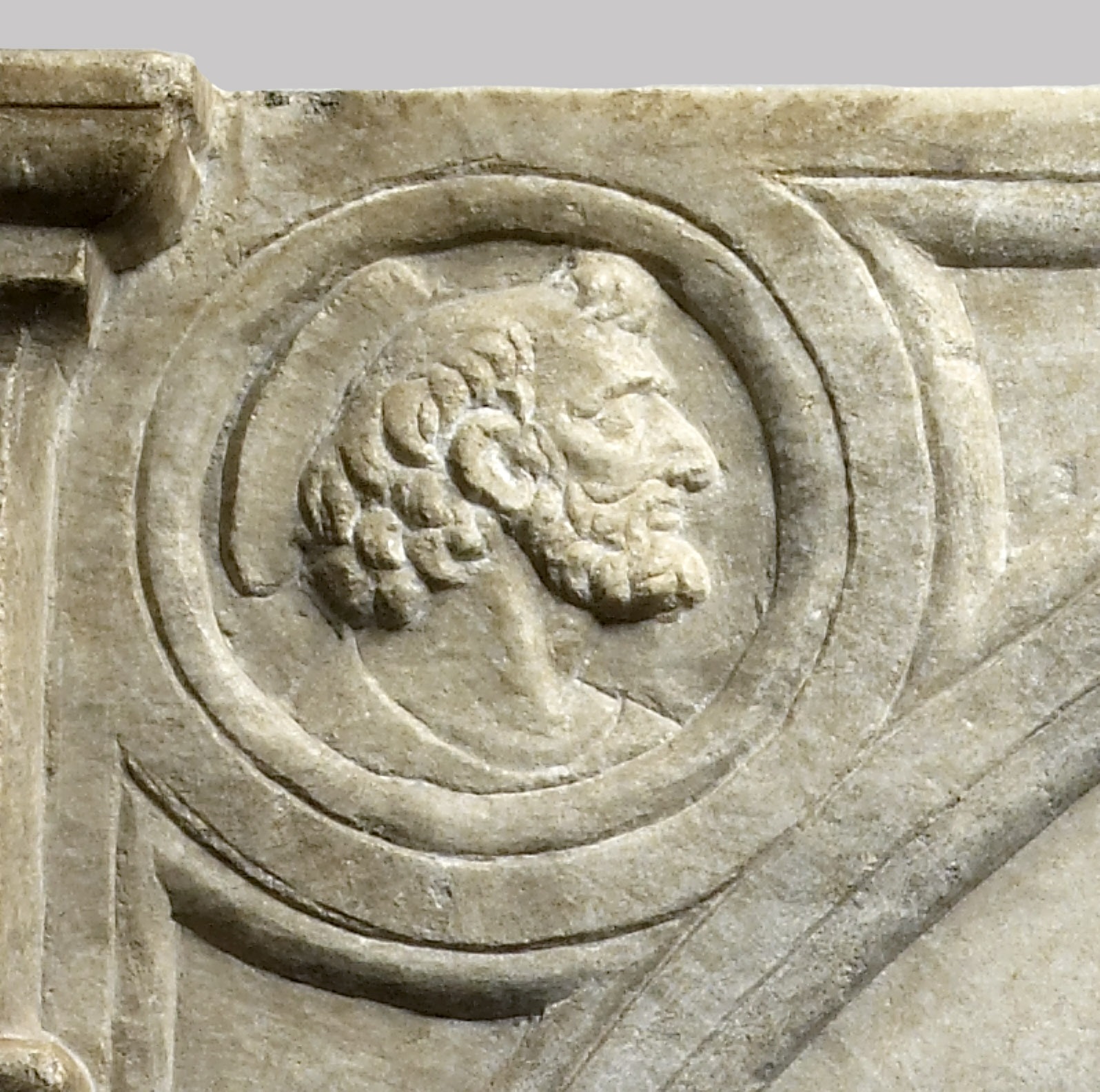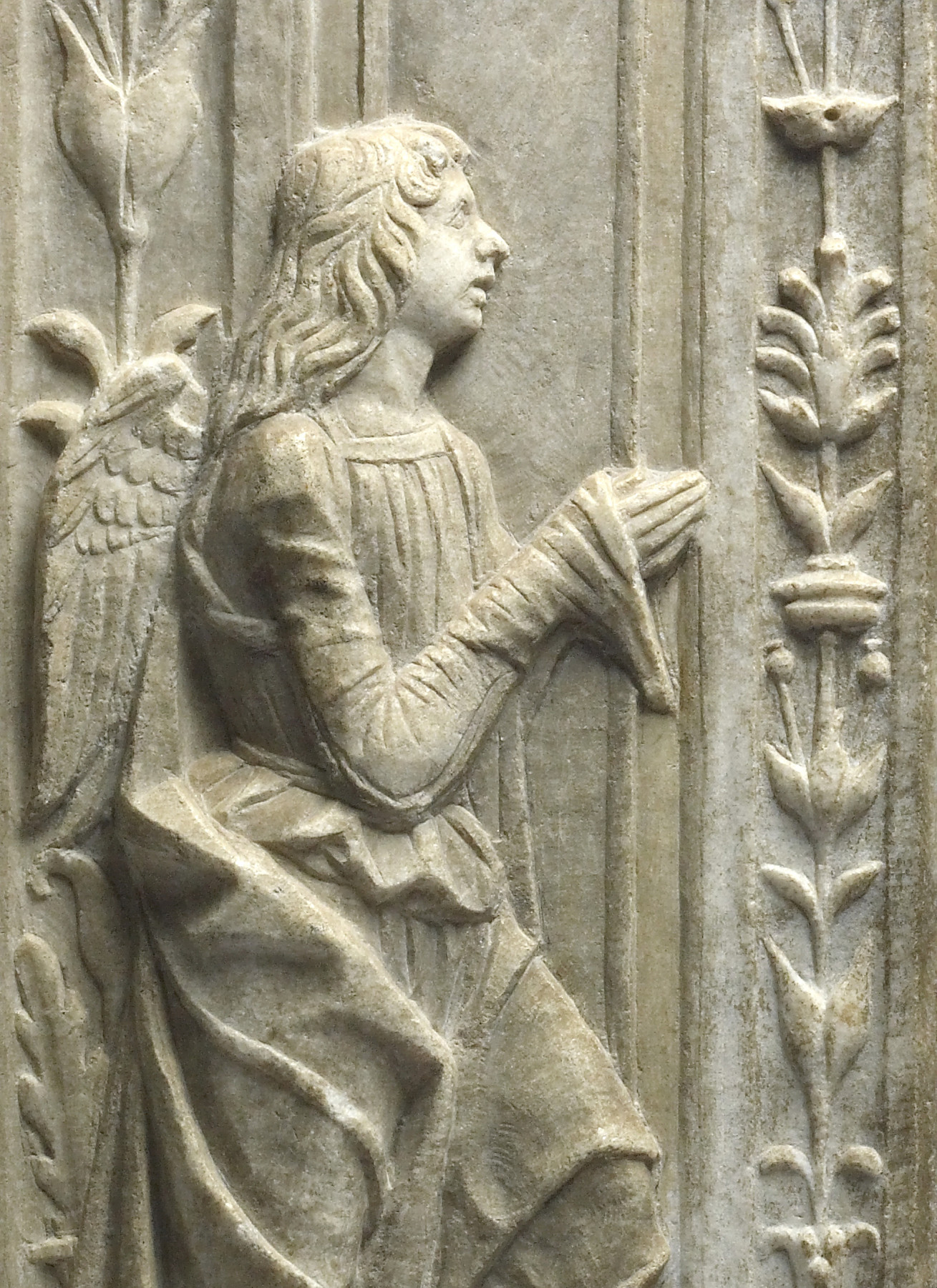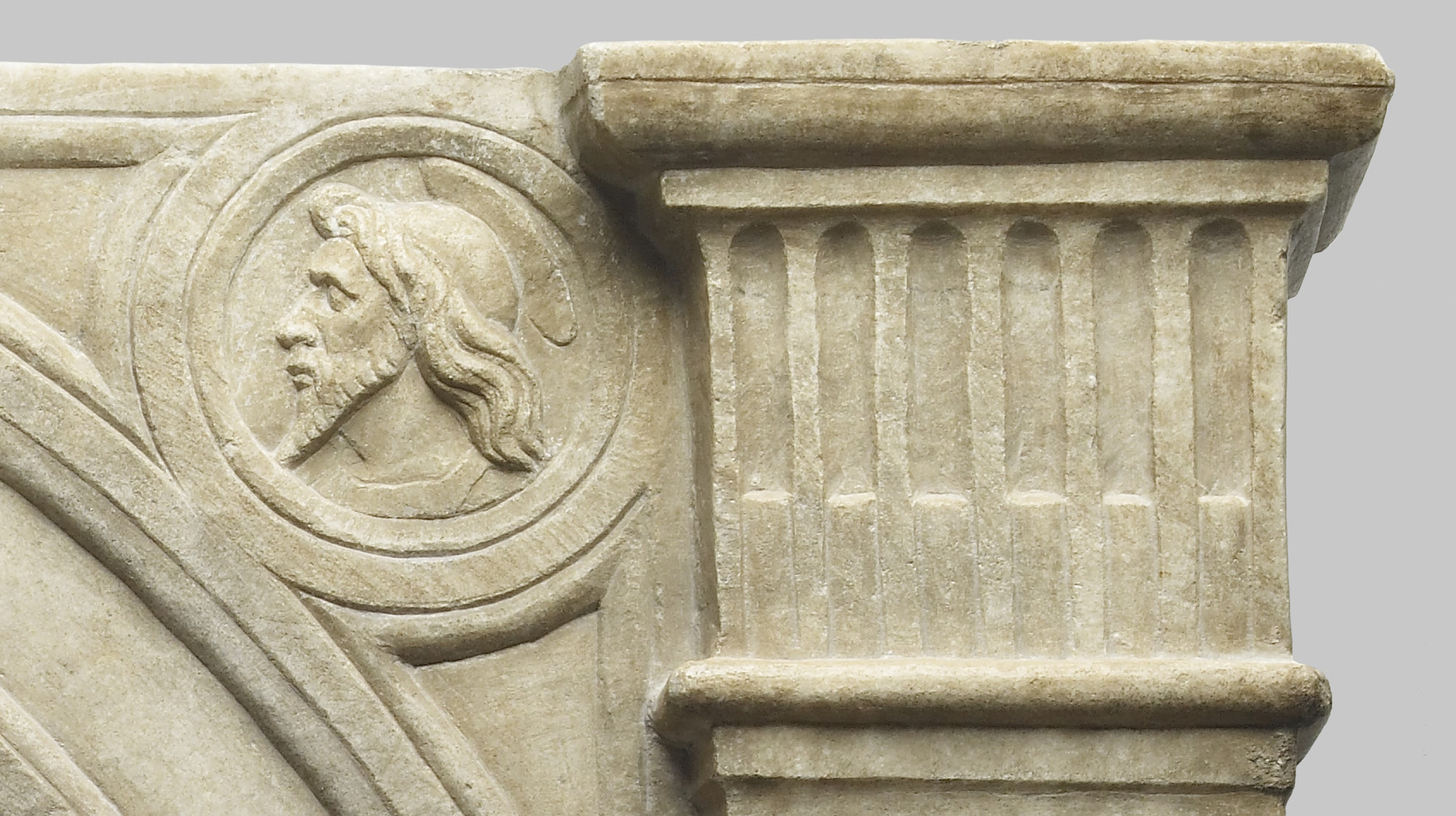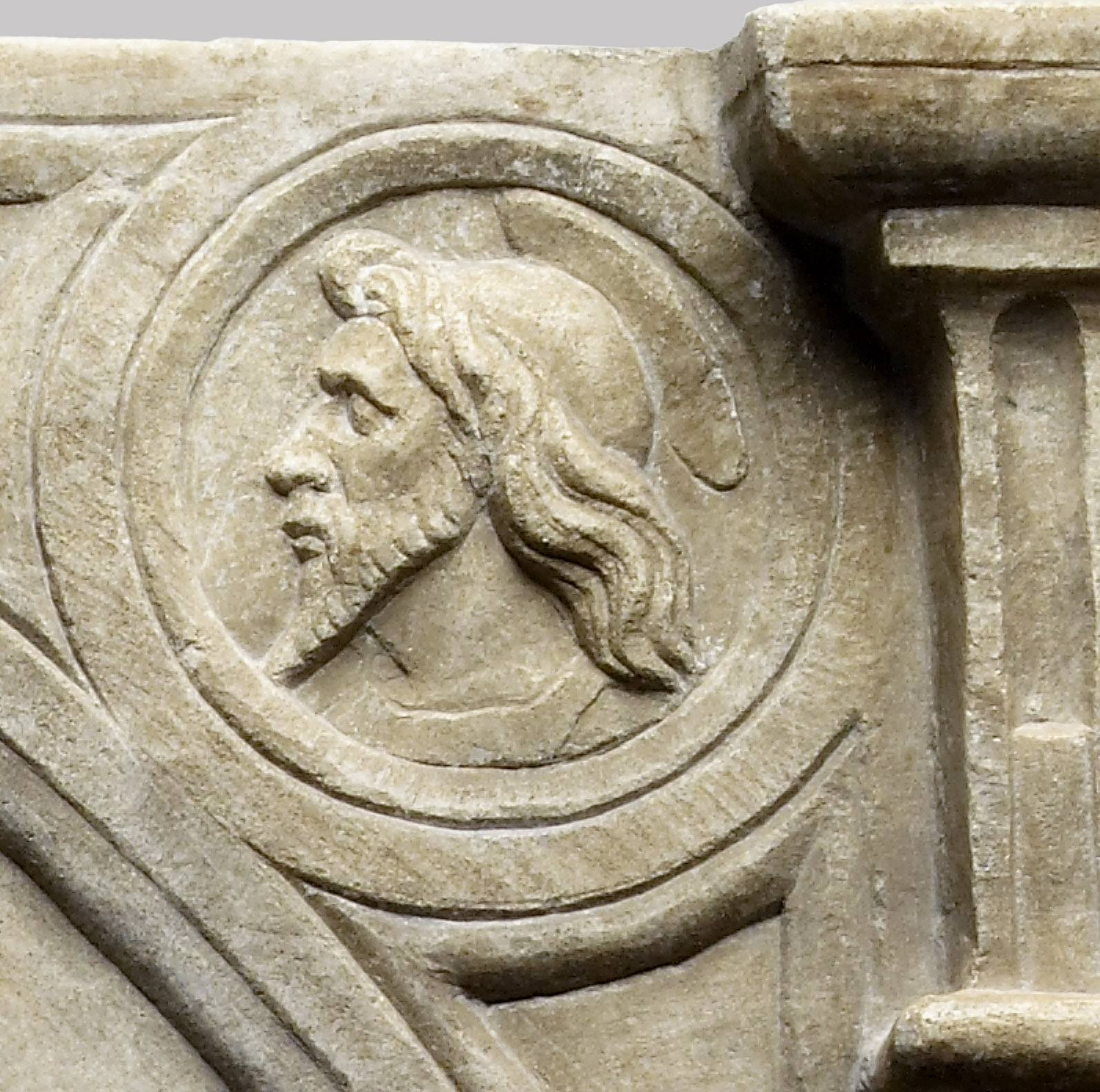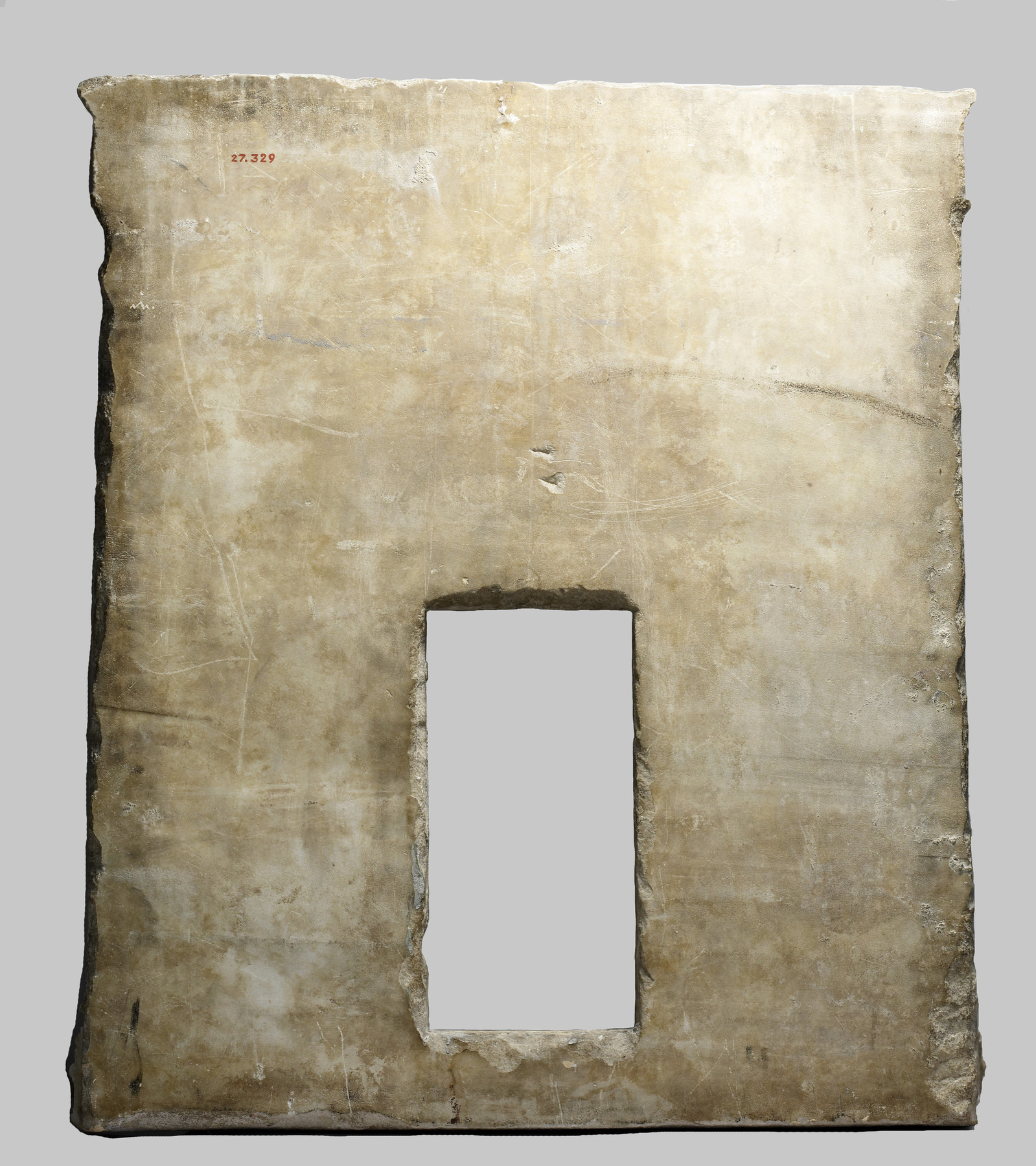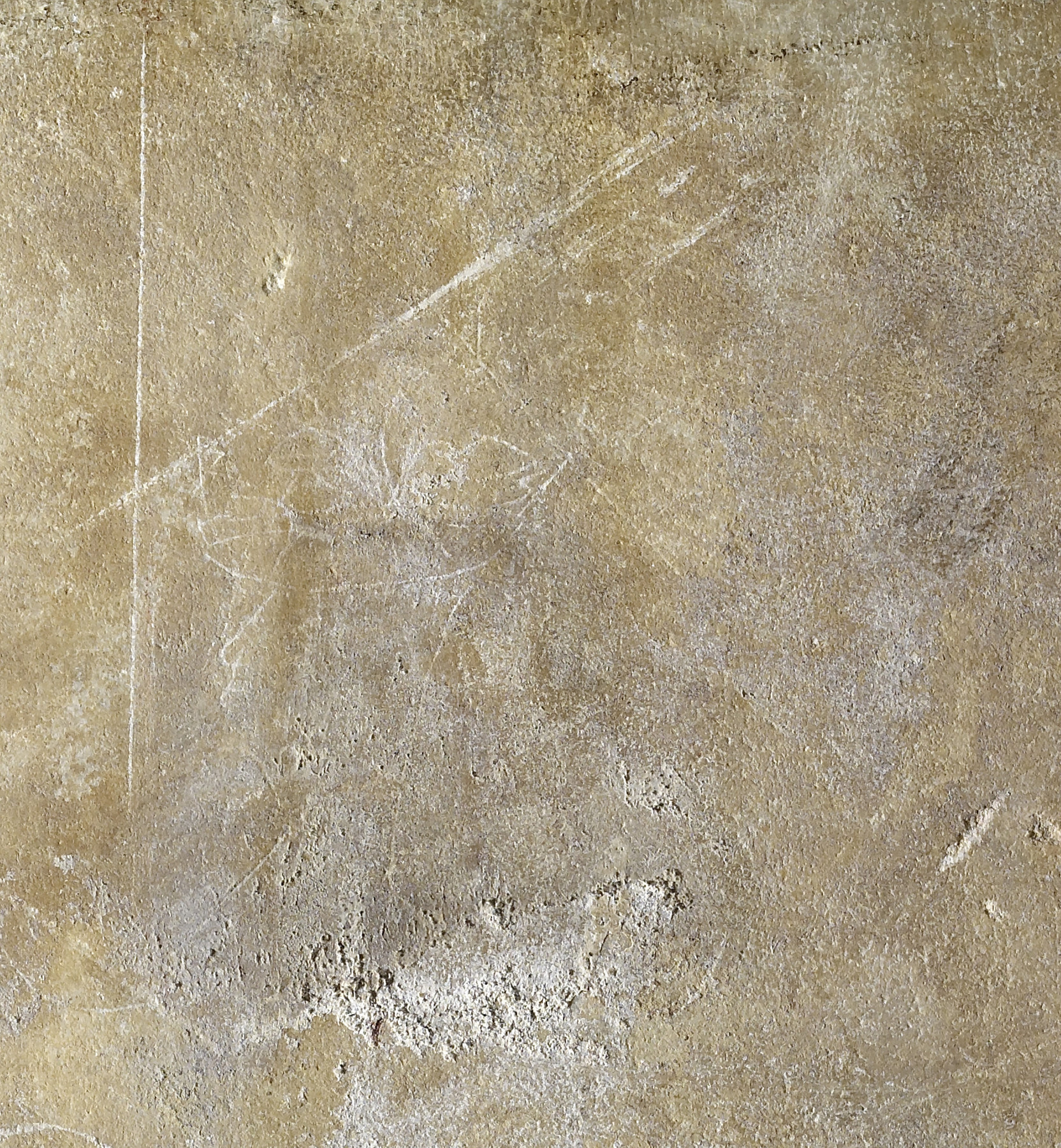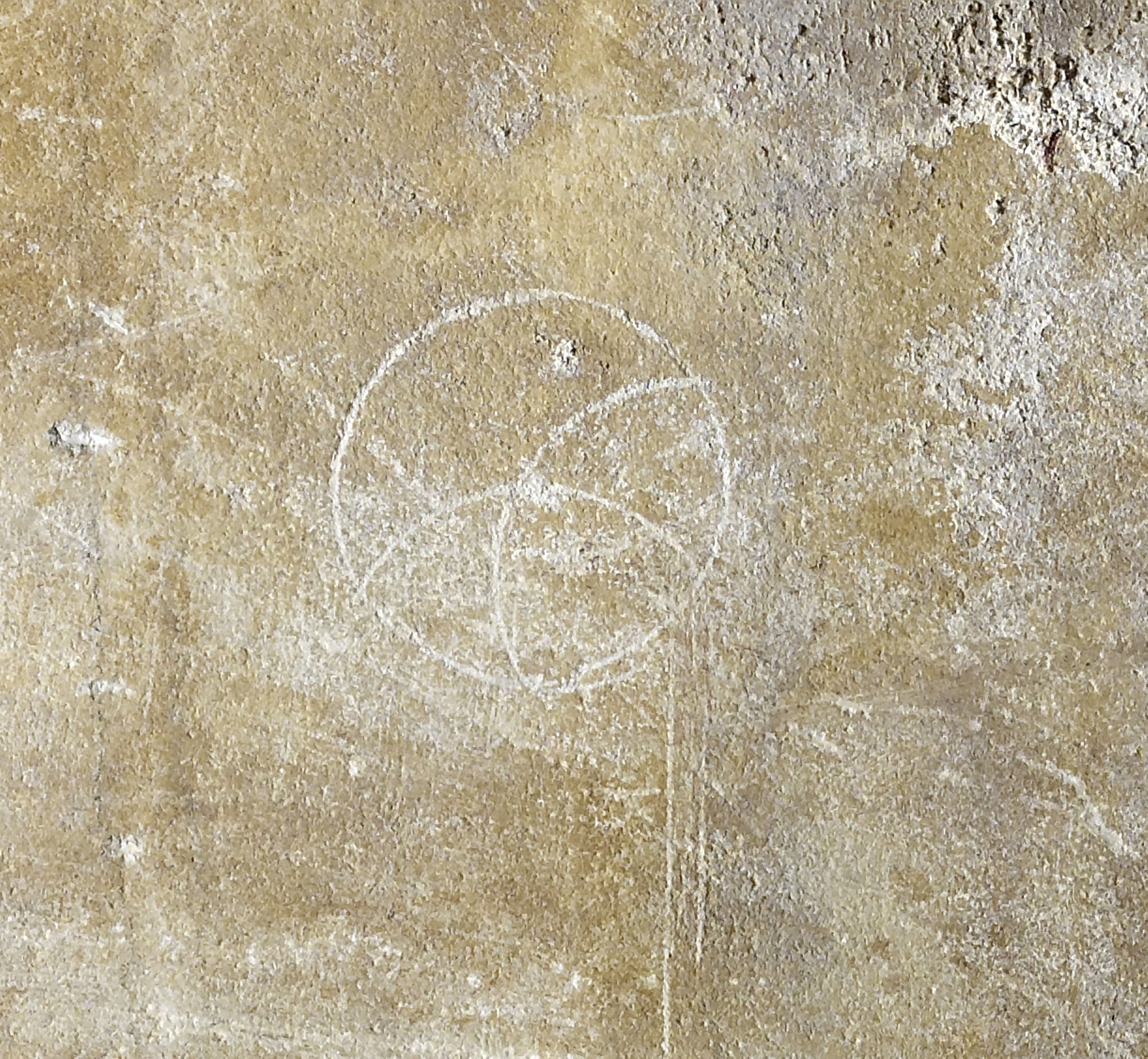Wall Tabernacle in the Form of the Sepulcher of Christ
(Renaissance Europe )
In Catholic churches in Renaissance Italy, the tabernacle was a receptacle for a supply of consecrated wafers (for celebrating the Mass) frequently inserted into the wall next to the altar. This marble tabernacle was designed to suggest the entrance to Christ’s sepulcher, or tomb, with adoring angels witnessing the miracle of Christ having risen from the dead. The door to the receptacle proper (probably brass) is now missing. The consecrated wafers within would have been transformed through faith into the flesh of the departed Christ. Linear perspective creates an impression of depth, drawing the eye toward the door, even though the relief is shallow. the piece was purchased by Walters as by the Florentine sculptor Benedetto da Maiano (1442-1497), but scholars today place its origins in Lombardy or In any case in Northern Italy.
Thistles and poppies are among the motifs featured in the decoration of the pilasters at the sides of the tabernacle. The thorns of the thistle and the blood-red blossoms of the poppy resulted in the plants being associated with Christ’s Passion and Resurrection.
Inscription
Provenance
Provenance (from the French provenir, 'to come from/forth') is the chronology of the ownership, custody, or location of a historical object.
Jacques Seligman; Henry Walters, Baltimore, purchased from Seligman on March 20, 1922 [per notation on back of photo in Seligman's files]; Walters Art Museum, 1931, by bequest.
Conservation
| Date | Description | Narrative |
|---|---|---|
| 2/15/1974 | Treatment | repaired |
| 2/28/2017 | Treatment | Cleaned for exhibition |
| 2/28/2017 | Treatment | The surface was cleaned using sodium citrate and an eraser to removed accumulated grime. No attempt was made to remove staining or the uneven surface coloration. |
Geographies
Italy, Milan (Place of Origin)
Measurements
H: 38 1/2 × W: 33 9/16 × D: 2 3/4 in. (97.8 × 85.3 × 7 cm); Door opening H: 14 15/16 × W: 7 3/8 in. (38 × 18.7 cm)
Credit Line
Acquired by Henry Walters in 1922
Location in Museum
Accession Number
In libraries, galleries, museums, and archives, an accession number is a unique identifier assigned to each object in the collection.
In libraries, galleries, museums, and archives, an accession number is a unique identifier assigned to each object in the collection.
27.329

